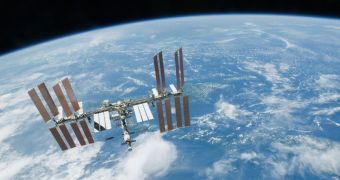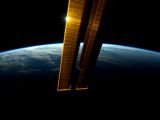The International Space Station (ISS) is 15 years old today, officials at the European Space Agency (ESA) announce. The orbital lab is the most expensive single object ever built on our plant, with an estimated cost of over $100 billion (73.9 billion euros).
The first module of the station was launched into space aboard a Proton rocket commissioned by the Russian Federal Space Agency (RosCosmos). Takeoff occurred from the Baikonur Cosmodrome, in Kazakhstan, on November 20, 1998. The first ISS module was the Russian-built Zarya.
The ISS is being developed and operated by the US National Aeronautics and Space Administration (NASA), RosCosmos, the Japan Aerospace Exploration Agency (JAXA), ESA and the Canadian Space Agency (CSA). It is currently divided in two, a Russian segment (ROS) and an American one (USOS).
The second module to go to space was the US-built Unity, which was launched around three weeks after Zaya, on December 4, 1998. Due to its size, the module was delivered to its orbital rendezvous point by the space shuttle Endeavour.
In addition to Russian and American modules, the station also features the ESA Columbus laboratory and the JAXA Kibo lab. Italy contributed to the effort by building the Harmony module, which was attached to the ISS in 2007.
The station has been permanently inhabited since Expedition 1 first entered these modules, on November 2, 2000. Currently, members of Expeditions 37 and 38 live and work aboard the lab. A standard mission in low-Earth orbit lasts for about 6 months, and all space agencies are represented.
ISS is supported by a large number of spacecraft. The US contributed its now-retired space shuttles, while Russian launches its Soyuz and Progress capsules. ESA has developed the Automated Transfer Vehicle specifically for resupplying the station, as did JAXA with its H-II Transfer Vehicle.
Lately, private spacecraft such as SpaceX's Dragon and Orbital Sciences Corp.'s Cygnus have begun running resupply missions to the orbital laboratory as well, under contracts awarded by NASA after the retirement of the US shuttle fleet.
Currently, the ISS is scheduled to receive funding until 2020, but hopes are high among participating space agencies that the lab will continue standard operations until 2028. If that is the case, then we could see the lab being used as a construction site for modules that will make up a newly-proposed, even-larger space station.

 14 DAY TRIAL //
14 DAY TRIAL // 
